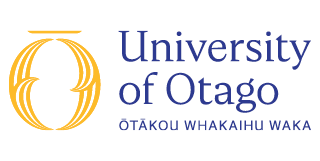Overview
Sediment transport, sedimentology and geomorphology of rivers, evolution of river systems and river management; laboratories as required.
About this paper
| Paper title | Geomorphology |
|---|---|
| Subject | Geography |
| EFTS | 0.15 |
| Points | 18 points |
| Teaching period | Semester 1 (On campus) |
| Domestic Tuition Fees ( NZD ) | $1,173.30 |
| International Tuition Fees | Tuition Fees for international students are elsewhere on this website. |
- Prerequisite
- GEOG 101
- Restriction
- GEOG 395
- Schedule C
- Arts and Music, Science
- Eligibility
- The content of this paper assumes that students have undertaken at least one introductory paper in Physical Geography, Earth Science or Geology
- Contact
- geography@otago.ac.nz
- More information link
- Teaching staff
Course Co-ordinator: Professor Sean Fitzsimons
- Paper Structure
The course is divided into three sections that deal with different aspects of geomorphology:
- PART 1: An introduction to geomorphology that includes a review of the integrated nature of earth system science, the geological background necessary for understanding earth surface processes and a review of the core techniques used by geomorphologists
- PART 2: A review of key earth surface process regimes including weathering, slope stability, fluvial processes and landforms, erosion and deposition on the coast and glacial processes and landforms
- PART 3: An examination of large scale issues in landscape development including how active tectonic processes create landscapes, how climate change drives landscape change and the application of understanding of geomorphology to environmental management issues
Assessment consists of a laboratory programme worth 45% (on-going during the semester), three take-home tests worth 15% together (on-going during the semester) and an external examination worth 40% (final examination).
- Teaching Arrangements
Two lectures per week and eight 3-hour laboratory sessions scheduled over the 13 weeks of semester.
- Textbooks
- Bierman and Montgomery (2013) Key Concepts in Geomorphology. W.H. Freeman. ISBN-10: 1429238607
- Graduate Attributes Emphasised
- Interdisciplinary perspective, Lifelong learning, Communication, Teamwork.
View more information about Otago's graduate attributes. - Learning Outcomes
Students who successfully complete this paper will have:
- The ability to "read" landscapes: to understand how they have formed and how they change over time
- Understanding of the relationships between tectonic and surface processes
- Understanding of earth surface processes associated with hillslopes, rivers, coasts and glaciers
- Knowledge of the strength and behaviour of rock, soil and water
- Knowledge and understanding of the erosion, transportation and deposition processes
- Knowledge of a range of techniques used in the investigation of earth surface processes and landforms
